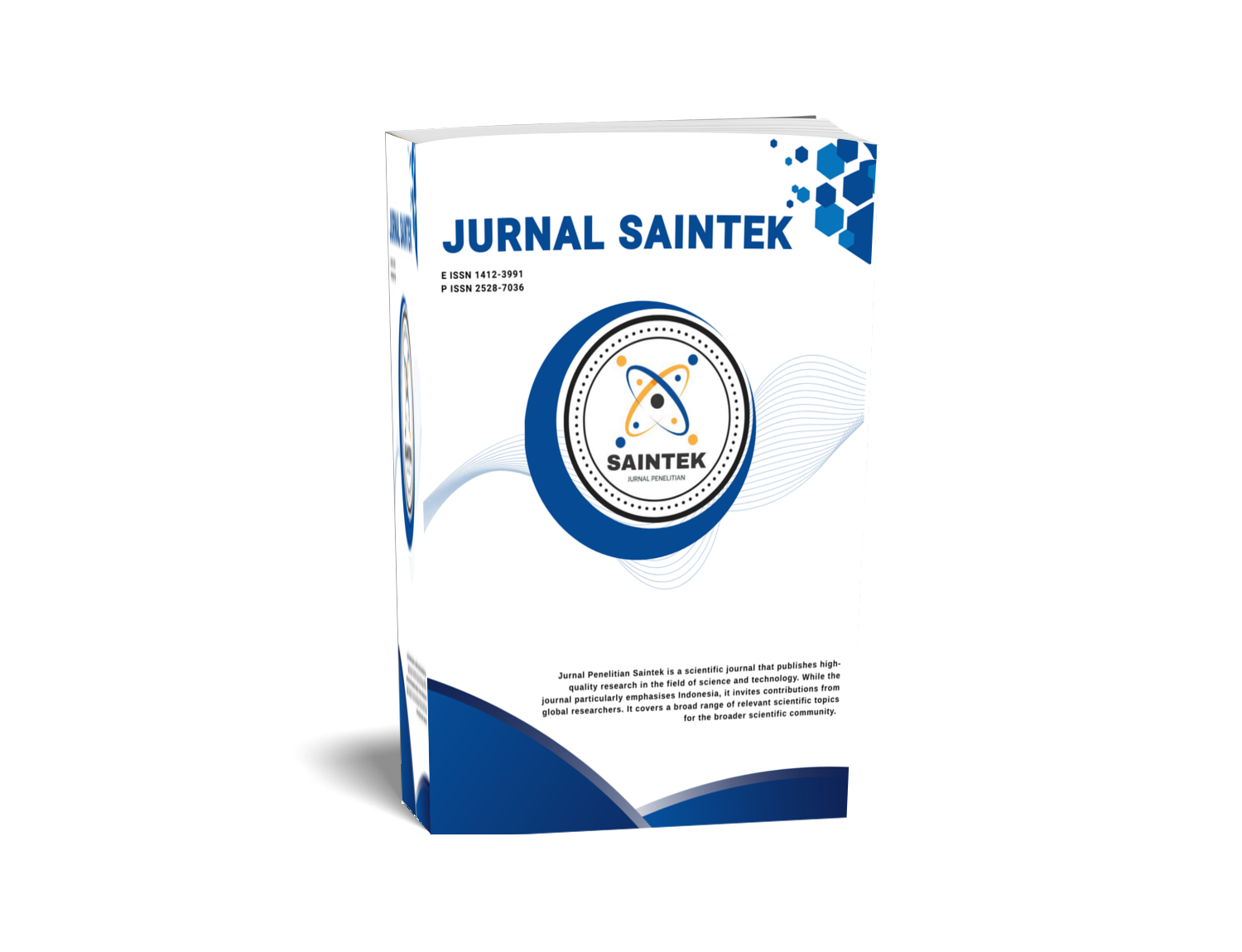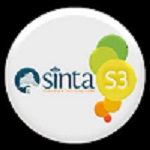THE EFFECTIVENESS OF NATURAL ZEOLITE AS METAL ABSORBENT COPPER(II) IN POOL WATER WITH COLOUMN ADSORPTION METHOD
DOI:
https://doi.org/10.21831/jps.v21i2.12506Keywords:
Adsorption, copper (II) ion, pool waterAbstract
This study was aimed at separating copper(II)ions contained in the pool water by coloumn adsorption method. The coloumn was ï¬ lled up with natural zeolite taken from Gunungkidul. The infl uence of zeolite size in particular contact time toward the effectiveness of the zeolite to adsorb metal ions of copper (II) ions were studied in this research. The effectiveness of zeolite adsorption was based on the efï¬ ciency value which is the ratio between the concentration of metal ions of copper (II) adsorbed by the metal ion concentration of copper (II) prior to adsorption. Copper metal ion concentrations were determined using Atomic Absorption Spectroscopy (AAS). The results show that the ability of the column adsorption system in the separation of metal ions of copper (II) was quite high. Column with zeolite 1 (size 10 mesh) can lower copper consentration up to 37.1698%, while the zeolite column 2 (size 5 mesh) can lower the consentration up to 35.9976%. These results indicate that the copper ions in the pool water can be separated quite well.
References
Agustiningtyas, Z. (2012). Optimasi adsorpsi ion Pb(II) menggunakan zeolit alam termodiï¬ kasi ditizon (Skripsi). IPB, Bogor.
Atkins, P. W. (1990). Fisika kimia Jilid 2 (ed. ke-4). (Terj.: Irma I. Kartohadiprodjo). Jakarta: Erlangga.
Cakicioglu-Ozkan, F., & Ulku, S. (2005). The effect of HCl treatment on water vapor adsorption characteristics of clinoptilolite rich natural zeolite.Microporous and Mesoporous Materials, 77(1), 47-53.
Cita, D. W., & Andriyani, R. (2013). Kualitas air dan keluhan kesehatan pengguna kolam renang di Sidoarjo. Jurnal Kesehatan Lingkungan, 7(1), 26-31.
Departemen Kesehatan RI. (1999). Proï¬ l kesehatan Indonesia. Jakarta: Ditjen PPM dan PLP.
Kundari, N. A., & Wiyuniati, S. (2008). Tinjauan kesetimbangan adsorbsi tembaga dalam limbah pencuci PCB dengan zeolit. Prosiding Seminar Nasional IV SDM Teknologi Nuklir (pp. 25-26). Yogyakarta: BATAN.
Lestari, D. Y. (2010). Kajian modiï¬ kasi dan karakterisasi zeolit alam dari barbagai negara. Prosiding Seminar Nasional Kimia dan Pendidikan Kimia 2010. Yogyakarta: FMIPA UNY.
Paduraru, C., & Tofan, L. (2008). Investigations on the possibility of natural hempï¬ Bres use for Zn(II) ions removal from wastewaters.Enviroment Engineering and Management Journal, 7(6), 687-693.
Palar, H. (2004). Pencemaran dan toksikologi lingkungan. Jakarta: Rineka Cipta.
Peraturan Menteri Kesehatan Nomor 416/ MENKES/PER/IX/1990 tentang Per- Efektivitas Zeolit Alam (Suyanta & Catri, C.R.) syaratan Kolam Renang dan Pemandian Umum.
Zakaria, A., Rohaeti, E., Batubara, I., Sutisna, & Purwamargapratala, Y. (2012). Adsorpsi Cu(II) menggunakan zeolit sintetis dari abu terbang batu bara. Prosiding Pertemuan Ilmiah Ilmu Pengetahuan dan Teknologi Bahan (pp. 190-194). BATAN, Serpong.
Downloads
Published
How to Cite
Issue
Section
Citation Check
License
Who Can Submit?
Any individual may submit an original manuscript for consideration for publication in Jurnal Penelitian Saintek as long as they hold the copyright to the work or are authorized by the copyright owner(s) to submit it. Authors retain initial ownership of the copyrights to their works prior to publication, except in cases where, as a condition of employment, they have agreed to transfer copyright to their employer.
User Rights
Jurnal Penelitian Saintek is an Open Access journal. Users are granted the right to read, download, copy, distribute, print, search, or link to the full texts of articles, provided they comply with the conditions of the Creative Commons Attribution-ShareAlike License 4.0 (CC BY-SA 4.0).
https://creativecommons.org/licenses/by-sa/4.0/
Author Rights
Authors retains copyrights.
Jurnal Penelitian Saintek by http://journal.uny.ac.id/index.php/saintek is licensed under a Creative Commons Attribution-ShareAlike 4.0 International License.









